The sapsucker, who was eating well and drumming away, also was losing weight and the inflammation in her wing continued to spread, even though I had put her on antibiotics. I took her back in for Shelley Baumann at Smalley’s Animal Hospital to re-examine, and she agreed with me that whatever was going on wasn’t responding to treatment, so we euthanized. Because the only facility in the state that performs necropsies charges rehabbers full-price for them, we opted not to have her necropsied, although it would have been nice to know what the problem was.
This is a situation other rehabbers and I have discussed at length and if you’re reading this, anyone at UGA, it would be really nice if UGA offered rehabbers just one or two free necropsies a year. We don’t often require them, but when we think they might be beneficial, we have to make a choice between paying for a necropsy or using those funds to benefit the animals that still have a chance at survival. Most of us opt to focus on the critters we still have a chance at saving.
This poor barred owl was found sopping wet by the side of the road on a Saturday evening. When I met his rescuers, I knew his chances weren’t great after a cursory parking lot exam. Nothing was broken, but he had severe head trauma, one eye was definitely trashed, and the other looked questionable.
When I met them to retrieve the three surviving hatchlings, which looked to be catbirds, none were in good shape. All were ice-cold.
One had the lower half of his leg nearly chewed off and was already almost dead from blood loss. He died before I got home with him.
I don’t want to leave you with all death and destruction, however. This utterly gorgeous “blonde” barred owl, a very large female, has been frequenting my yard for several months, and I lucked up toward the end of March and had the camera handy when she was out shortly before dusk.
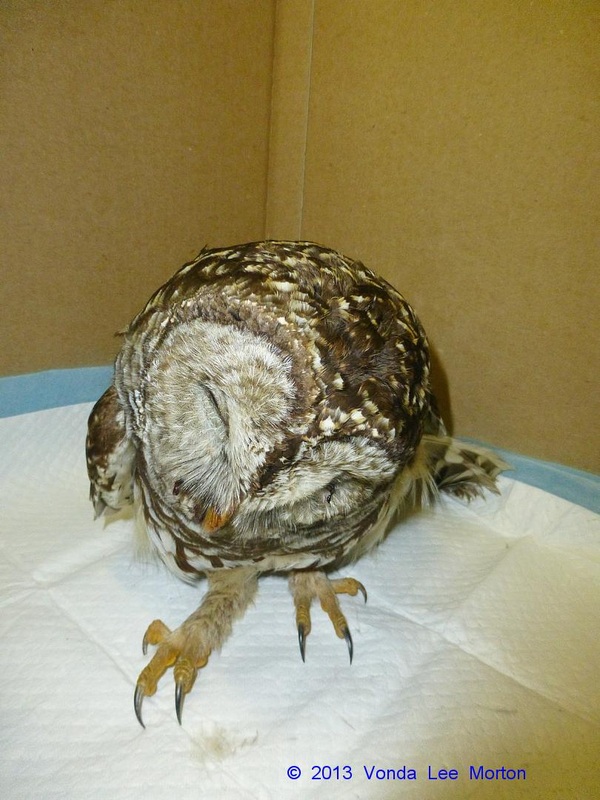
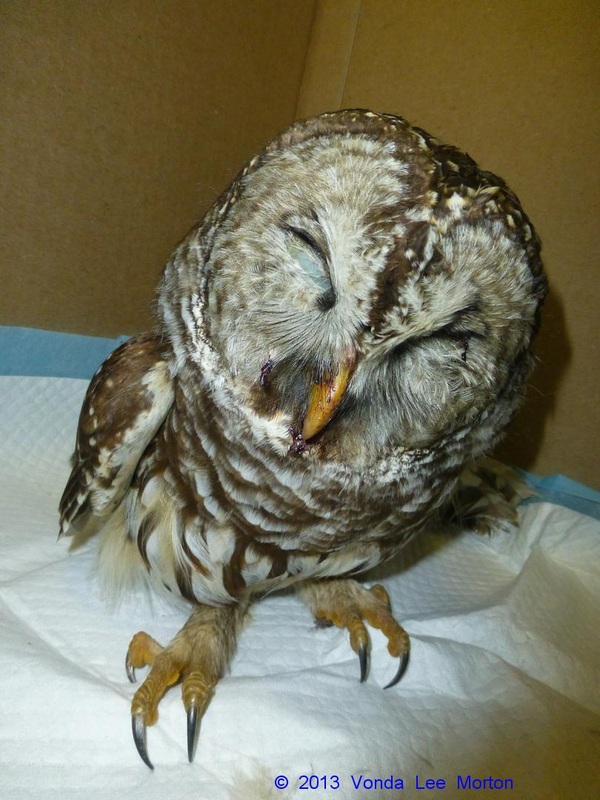
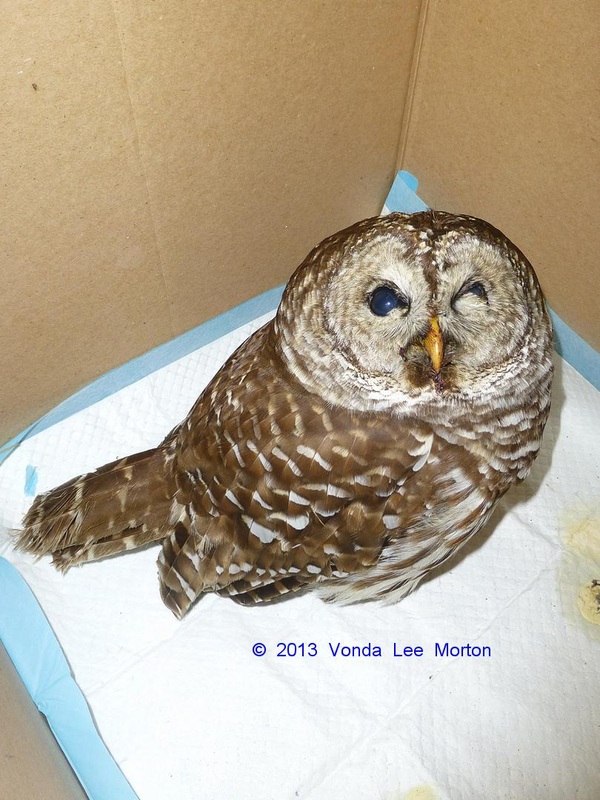
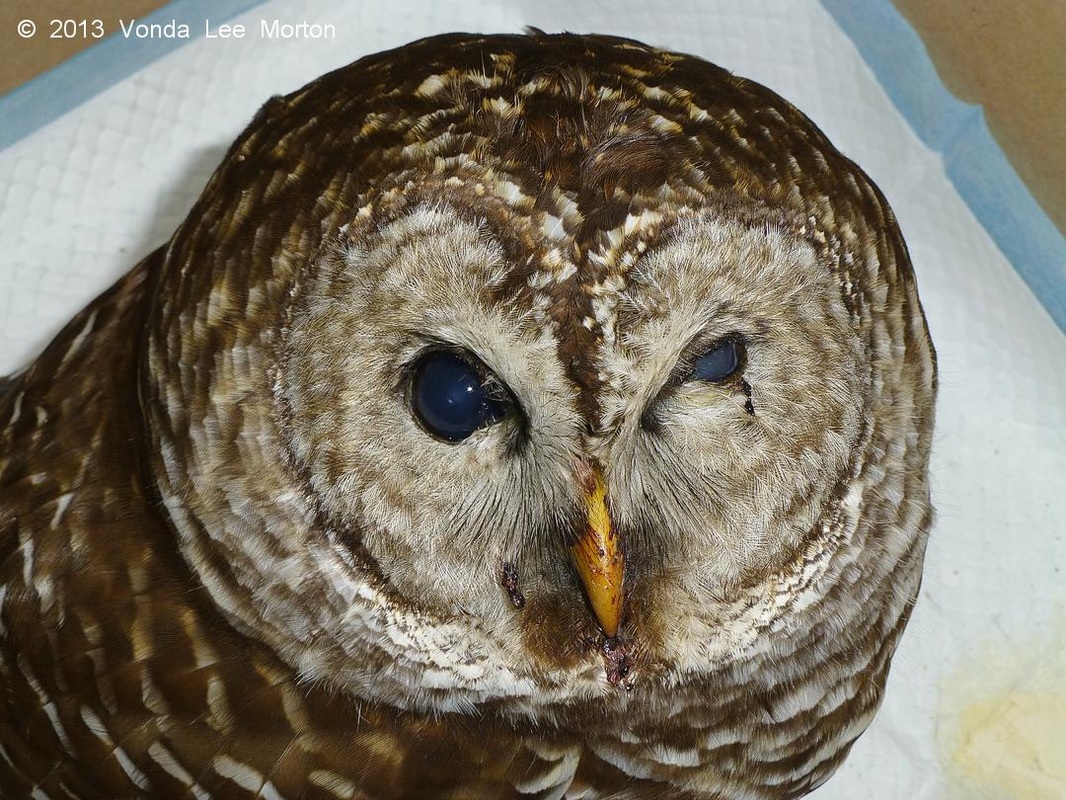
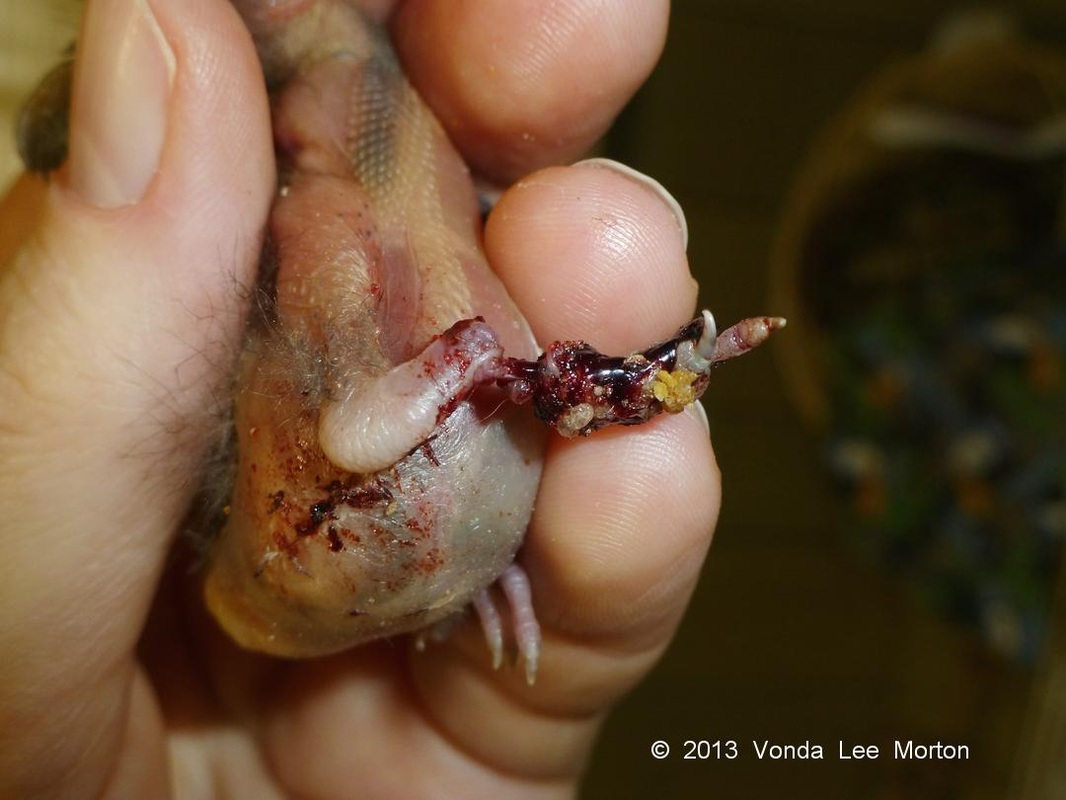
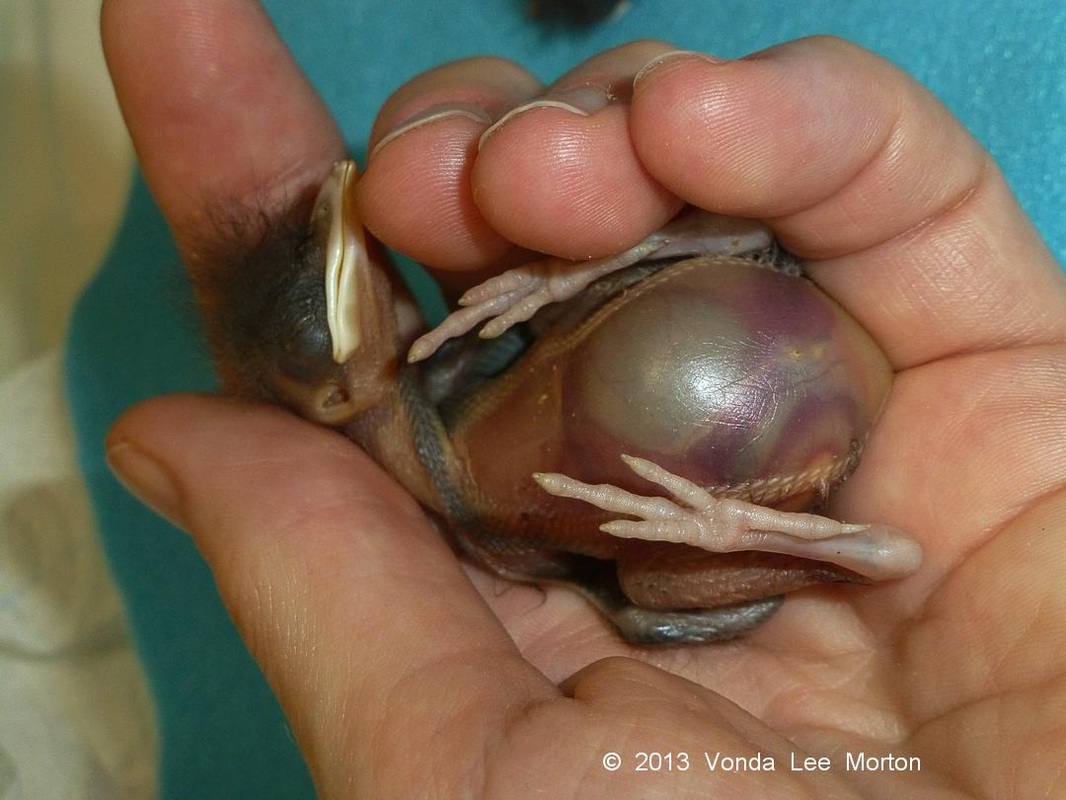
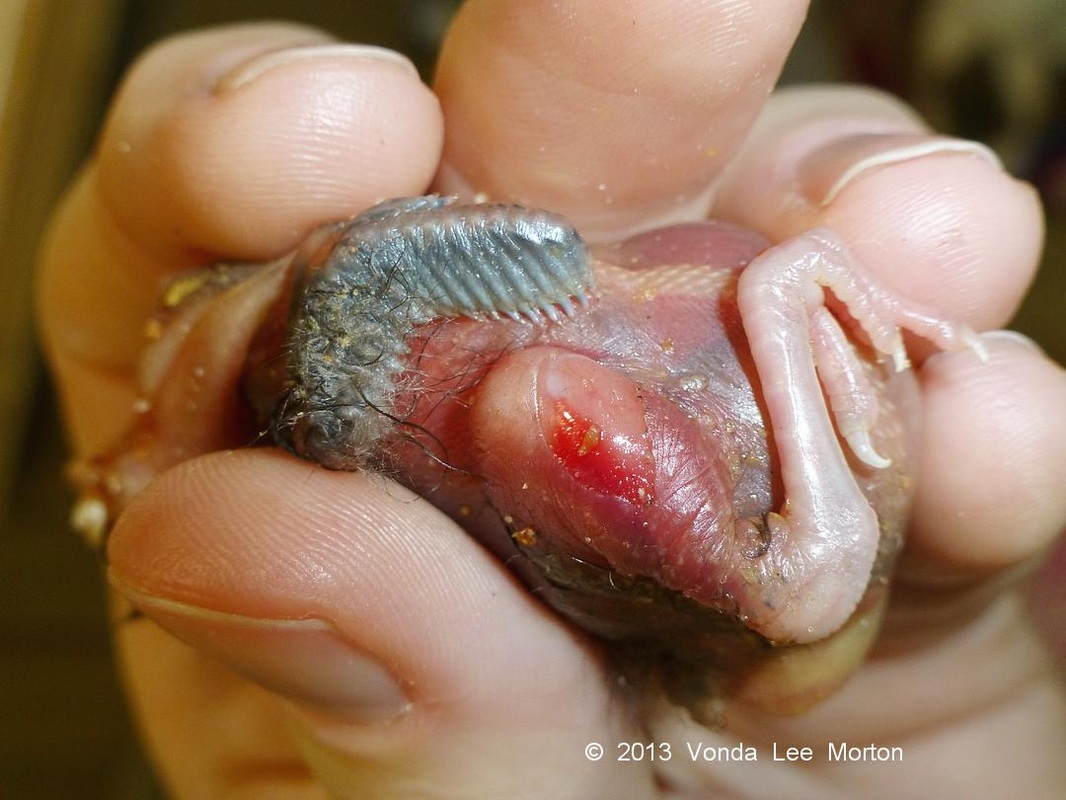
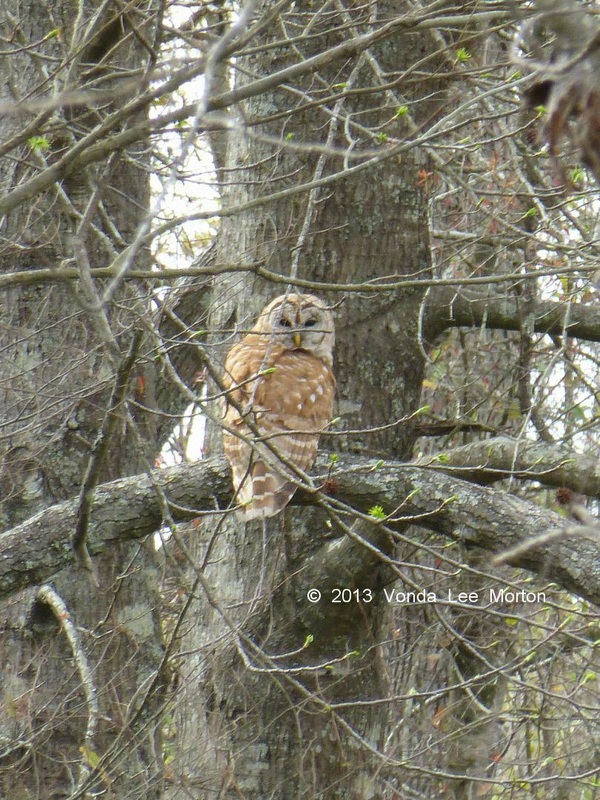
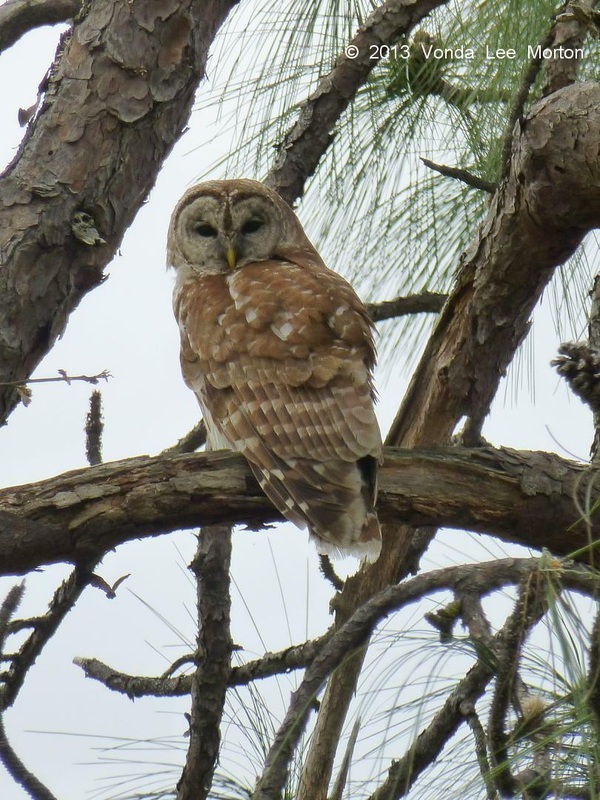
 RSS Feed
RSS Feed
